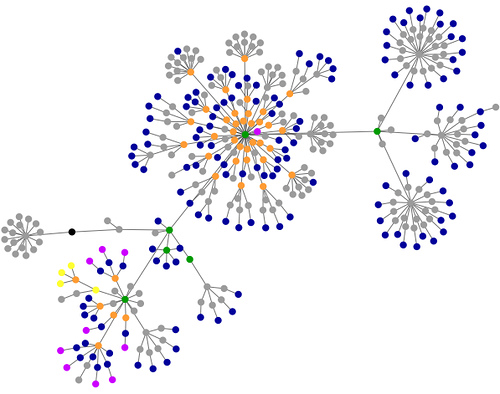Connect with us
Recent Posts
-
Internal Linking 101
 There are several methods to improve the ranking of your site, but when it comes to internal linking we run short of ideas for two reasons. First, we do not think of internal linking as much as we think about external links because that is what everyone seems to push the hardest. Secondly, there are not enough resources online that will teach us how to improve the internal links even though it is fairly simple with just a little guidance.
There are several methods to improve the ranking of your site, but when it comes to internal linking we run short of ideas for two reasons. First, we do not think of internal linking as much as we think about external links because that is what everyone seems to push the hardest. Secondly, there are not enough resources online that will teach us how to improve the internal links even though it is fairly simple with just a little guidance.To help get you on the right path, here are some tips on how to improve your internal links. Normally, our websites will have internal links in the form of a URL ripped from the navigation bar. You can enhance the effect of the navigation bar on internal linking by using keywords as the linking text in the navigation bar rather than some random text.
Also, the navigation bar should be plain HTML and should not be image links to the inner pages. One of the best practices in internal linking is to have the navigation bar on the left hand side so that the search bot will crawl the navigation bar as soon as it lands on your site. Resist the temptation to stuff the navigation bar with the keywords – that is not going to help you. The navigation text link should mirror the content of the page it is linking. Don’t try to fool the bots, in the end they always win.
Concentrate on getting internal links is the footer of your website as well – and this is very important. The footer navigation link is similar to the regular navigation bar we just discussed. For SEO purposes, they can be used as a means of getting a few extra internal links. If you want the footer links to work up to their potential, you cannot have too many of them because that will just dilute the effectiveness of individual links. Make sure that you have a link to your sitemap in the footer as well – and that is a very important step! The sitemap will of course have links to all the pages of your website arranged in hierarchical order.
Text or content contained on the web page gives us ample chance to create contextual internal text links. If you good content, this is not a problem. If you have poor content, the best thing to do is get a copywriter to provide you with content you can use better. These are bread and butter links and need to be done correctly.
An excellent page for internal linking is the FAQ page. FAQ pages cover all the aspects of your products or services in the form of help text. Instead of having all the FAQs and their responses in the same page, make individual pages and cross link the pages within the FAQs section as well as the services pages as in line text links. This is a great way to build strong internal links quickly.
News pages can also be a great way to introduce more internal links in the form of inline text. Since the news updates will be based on your products and services, you will find many opportunities to insert in line text links. You must remember however, that internal links are just a way of improving your keyword strength and good internal linking alone will not take you to the top of the search results page. To do that you need to have a concerted plan to enhance your site as a whole.
Recent Posts
-
What are Top 2020 SEO Trends...
1.The ERA Of VOICE SEARCH Hello, 2020! Long gone are the days when we used to head over to the search engines on our desktops and
Read More -
Why Is SEO Super-Duper...
The year’s 2019! We have long laid our footsteps in this digital world. Did you know that more than 4 billion people al
Read More -
National SEO Services –...
Introduction about National SEO Services A National SEO service provider uses search engine optimization practice to enhance the
Read More






